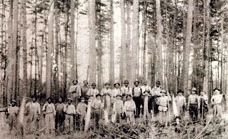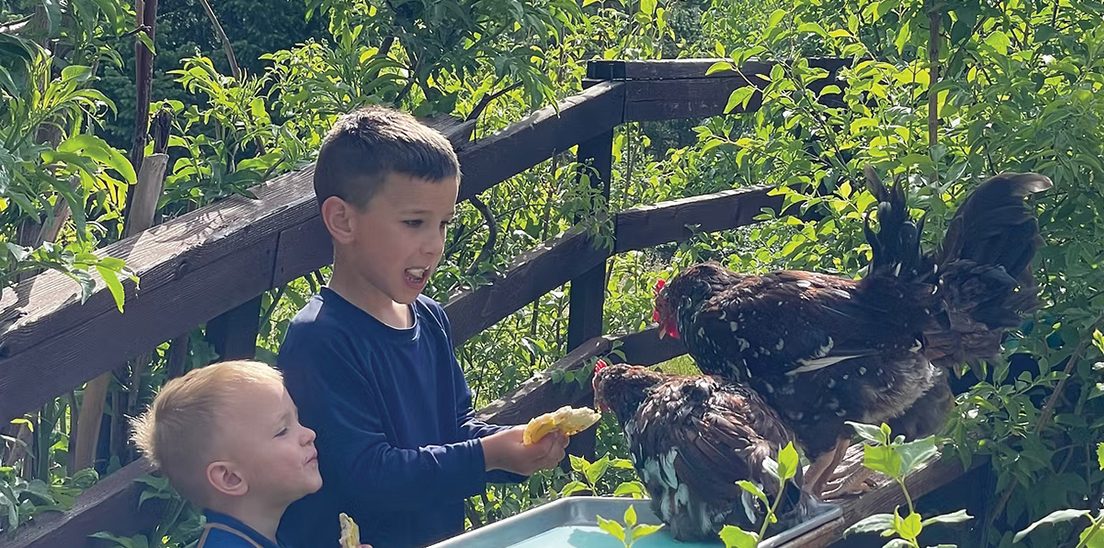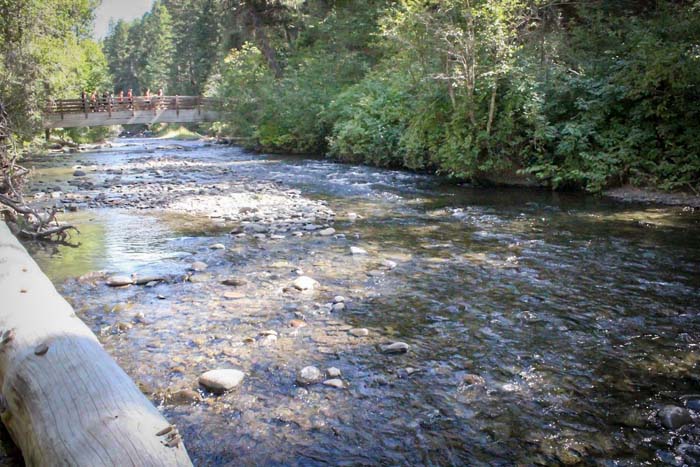THE AFRICAN-AMERICAN LOGGERS OF MAXVILLE
Published 12:00 am Monday, August 13, 2007

- Loggers at a logging operation near Maxville in the 1920s. (Photo courtesy of Gwen Trice).
– Joyce Osterloh
Trending
Correspondent
A narrative, a story; the aggregate of past events and human affairs; the discipline that records and analyzes past events. The American Heritage Collegiate Dictionary defines "history" with these words. Gwen Trice, a La Grande native and recent resident and longtime visitor to Wallowa County, is bringing that definition of history to life with a project that is just beginning to unfold.
Gwen grew up in La Grande and went to Seattle shortly after high school graduation. She thought she would find out where she belonged, who she was and be able to end the search for her identity in the city. Instead, her journey has brought her full circle and she has returned to Eastern Oregon, to Wallowa County, to tell the story of her heritage through a documentary about the African American community in the old logging town of Maxville, north of Wallowa. The project is still in the preliminary stages but will eventually be produced by Oregon Public Broadcasting.
Trending
According to Trice, her father and grandfather were among the loggers brought to Maxville by Bowman-Hicks Lumber Co., which had timber mills in Arkansas, Louisiana and Mississippi, in about 1924.
The story of Maxville really began as far back as 1908 when the railway lines were extended from Elgin to Joseph and Palmer Lumber Co. of Union County began extending logging operations into Wallowa County.
In 1910 Palmer Lumber Co. hired the Morrison-Knudsen Co. to construct a railroad line from a siding on the Wallowa River up Howard Creek about five miles to a logging camp called Camp 5, according to the Oregon Historical County Records Guide website.
Palmer Lumber Co. bought or leased homesteads for the timber around Smith Mountain just out of Wallowa. In 1922 Bowman-Hicks Lumber Co. purchased the Palmer Lumber Co. operation at Camp 5. Since this was a temporary camp, a permanent site was in order. The company sent three men, Joner Trump, John Carper and Don Riggles, to find a location for a permanent camp. They recommended a spot called Bishop Meadows, and in 1923 the company began constructing a town there to be named Mac’s Village, or Maxville, after the company superintendent, J.D. McMillan.
When Bowman-Hicks bought the Nibley-Mimnaugh Mill in Wallowa in 1924, according to "The Town That Was Maxville" by Mark Highberger, the company was no longer dependent on the mills in Union County. The outlying railway spurs were eventually connected to the mill yard and Bowman-Hicks controlled most of the lumber related jobs in the lower Wallowa Valley and north of what is now Enterprise.
With the capability of hauling more logs to the mill, the jobs there expanded and more people were needed. This, in turn, meant more jobs in the woods and the town of Maxville continued to grow.
Bowman-Hicks brought white and black laborers from the South, Arkansas and Arizona. The new town was divided into two segregated neighborhoods. According to Gwen Trice, her father and grandfather were attracted by hand-bills advertising the job opportunities.
"Some came from Arizona, some from Arkansas. Many came from the deep South to escape racism, and the pay was much better in Oregon, too," she said.
The blacks’ neighborhood was separated from the whites by the railroad tracks. Their homes were built to fit onto a flatcar. They were 50 feet long and 13 feet wide.
Gwen’s father, Lucky Trice, remembered in an interview in "The Town That Was Maxville," that the Ku Klux Klan came to town in 1925. No one knows why they came but the company superintendent de-hooded them and told them to leave and not come back.
By 1926, according to historical records, there were about 400 people living in Maxville. There were 75 students in the white school and 13 in the black school, which is said to have been the only one of its kind in Oregon at the time, according to the Highberger book.
The jobs that sustained the town were either in the timber or involved maintaining and running the trains. The black workers were not allowed to work in the mill at first, but later they did. Gwen Trice describes her father and grandfather as men who could work on the engines as well as in the woods. As much as 15,000 to 20,000 board feet of pine was cut a day.
In 1933 the town of Maxville officially closed down. The lumber market had slowed down with the onslaught of the Depression in 1929. The timber and railway workers lost their jobs and moved away. Some people remained in Maxville through the ’40s but the buildings were gradually dismantled or hauled away.
Where did those families go? Where are their descendants today?
Although the story of Maxville seems to end here, the story of Gwen Trice’s family in Eastern Oregon had barely begun. Gwen’s father, great-grandson of a mulatto slave named Morris Trice, had come from Arkansas seeking opportunity in the forests of Oregon. In 1933, at the age of 36, he left Maxville and went to Baker City where he drove a logging truck. Although he was older than most soldiers, he entered the air corps and served in WWII. After the war he came back to Northeast Oregon, sent for the woman he intended to marry and settled in La Grande. He and his wife, Dorothy, raised their family of seven children there.
Lucky Trice was an amazing man, Gwen says. He was a wonderful story teller and entertainer.
"That ability attracted people to him. It didn’t even matter that the stories weren’t all true," she said.
He had an abiding love for the land and nature. He worked with an early organization of steelhead fisherman and negotiated with the Corps of Engineers and collaborated with the Nez Perce about establishing the Looking Glass Salmon Hatchery. Hunting and fishing in the wilds of Northeast Oregon was a huge part of his life. He worked with Oregon Department of Fish and Wildlife in various capacities.
According to Gwen, Lucky was constantly inventing. When slot cars were the new fad, he designed a slot car track where kids could come and race their cars. He organized slot car league competitions. Kids loved to hang around and race their cars; it was a comfortable place for young people. Gwen remembers their home being a temporary refuge for kids needing a place to stay. Lucky was recognized by the Issac Walton League for his work with youth.
At different times he ran a shoe shine shop and sports store, a furnace cleaning business in Oregon, Washington and Idaho. He played minor league baseball and was an amateur boxer and served on the regional boxing commission.
"He was not a tall man, but he had a huge presence," Gwen recalls. "He taught us to be honest, to work hard and to be proud to be Americans."
According to Gwen, the story of her father, who passed away in 1985, and the other men and their families who were a part of the unique community of Maxville needs to be told and preserved. The story of the black community in Maxville is a nugget of history that has remained un-mined for decades. For Gwen Trice, the documentary project is more than recounting historical events.
"The documentary is intended to be an honor piece, not a show. My life and who I am has unfolded in parallel to this story. I am talking to people who have memories of that time. I’m archiving their stories and preserving them. I was able to spend time with Charlie Trump who passed away recently. He was a Wallowa County native who grew up in Promise, near Maxville. He remembered when he was 17 years old playing music with my dad. ‘Your dad sure could dance!’ he said. It was huge for me. These families are a part of Wallowa County, a part of the history, the story of the place, the people ? then, and now," she says.









